| Artist | |
|---|---|
| Painting Medium | Natural Color on paper |
| Frame status | unframed |
| Shipping | 1-3 Business days after placing the order |
| Dimensions | 7 * 11 in |
The Kalighat Painting of a Man with Rose is an exquisite embodiment of Bengal’s 19th-century artistry, merging simplicity with sophistication. Originating from the Kalighat region of Kolkata, this painting captures a moment of quiet grace — a man delicately holding a rose, symbolizing love, refinement, and contemplation. The Kalighat Painting of a Man with Rose stands as a bridge between devotion and modernity, showcasing the evolution of Indian folk art into an expressive, human-centered form.
Historical Origins of Kalighat Art
The origins of the Kalighat Painting of a Man with Rose lie in the bustling Kalighat temple precincts of 19th-century Kolkata. Rural artisans, known as patuas, migrated to the city and began painting on paper instead of cloth scrolls. Their works evolved from depicting mythological deities to scenes from daily life. The Kalighat Painting of a Man with Rose belongs to this later phase, when artists explored emerging urban themes, reflecting the cosmopolitan life of colonial Bengal.
Symbolism in the Kalighat Painting of a Man with Rose
The Kalighat Painting of a Man with Rose is rich in symbolism. The rose represents affection, purity, and sophistication, while the man’s demeanor reflects introspection and sensitivity. Often interpreted as a babu—a gentleman of colonial Bengal—the subject embodies both admiration and satire. His refined posture, calm expression, and delicate gesture create an image of elegance that subtly critiques the vanity and romanticism of urban society.
Artistic Technique and Composition
The Kalighat Painting of a Man with Rose exemplifies the unique aesthetic principles of the Kalighat style — bold outlines, rhythmic brushwork, and minimal background. Painted with natural pigments made from stones, leaves, and soot, each stroke was infused with precision and vitality. Artists used bamboo or squirrel-hair brushes to create fluid lines that defined the figure’s grace. The Kalighat Painting of a Man with Rose demonstrates how simplicity and elegance can convey deep emotion without intricate detail.
Cultural and Social Context
The Kalighat Painting of a Man with Rose also mirrors the social changes of 19th-century Bengal. During this era, Kolkata was a center of cultural reform and colonial influence. The portrayal of the babu—dressed in traditional yet fashionable attire—illustrates a society negotiating between tradition and modernity. Through such imagery, Kalighat painters commented on vanity, love, and social aspiration. The Kalighat Painting of a Man with Rose thus functions both as an artistic expression and a social document.
Process and Materials Used in Kalighat Paintings
Creating the Kalighat Painting of a Man with Rose required a deep understanding of natural materials and technique. Artists prepared handmade paper coated with chalk paste for smoothness. They used natural colors: red from vermilion, black from lamp soot, yellow from turmeric, and white from chalk. The pigments were mixed with plant-based gum for longevity. The finished piece was burnished with a shell to give it a subtle sheen. Every Kalighat Painting of a Man with Rose thus carried the raw essence of Bengal’s organic artistry.
Emotional Depth and Narrative Meaning
The emotional appeal of the Kalighat Painting of a Man with Rose lies in its stillness and grace. The man’s expression and posture evoke a sense of reflection and affection. The rose becomes an extension of his emotion — symbolizing unspoken feelings, romance, and human vulnerability. This quiet sensitivity distinguishes the Kalighat Painting of a Man with Rose from the religious works that dominated Indian art, marking a shift toward psychological and emotional realism.
Legacy of the Kalighat Painting Tradition
The Kalighat Painting of a Man with Rose remains an enduring symbol of Bengal’s artistic innovation. Kalighat art inspired future modernist painters like Jamini Roy, who adopted its simplicity and expressive clarity. Today, such paintings are celebrated in museums like the Victoria and Albert Museum, London, and the Indian Museum, Kolkata. The Kalighat Painting of a Man with Rose continues to resonate for its timeless beauty and humanistic spirit, connecting folk traditions to contemporary aesthetics.
Why the Kalighat Painting of a Man with Rose Endures
The lasting appeal of the Kalighat Painting of a Man with Rose lies in its universal emotion and refined elegance. It transcends time, reflecting human tenderness through the simplest of gestures. For collectors and admirers of Indian art, this piece offers not just visual pleasure but also a glimpse into Bengal’s cultural awakening during the colonial era. The Kalighat Painting of a Man with Rose remains a poetic representation of love, introspection, and the enduring dialogue between art and life.
Explore more handcrafted artworks in our Pattachitra Collection or follow The Bengal Craft on Instagram to see new arrivals and artisan stories.
Check out our other products- Pattachitra
Be the first to review “Authentic Kalighat Painting of a Man with Rose – 1 Pcs” Cancel reply
Related products
Pattachitra



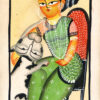
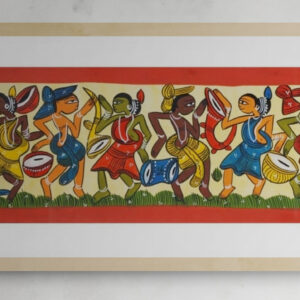
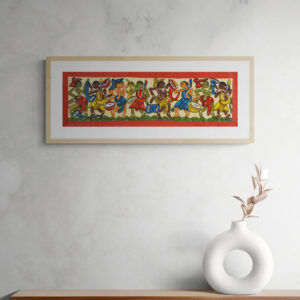

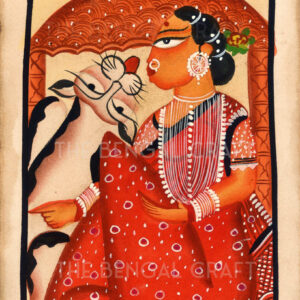

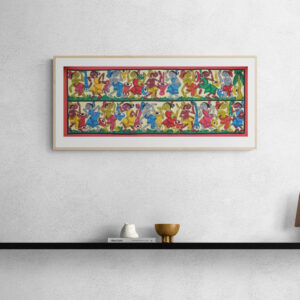

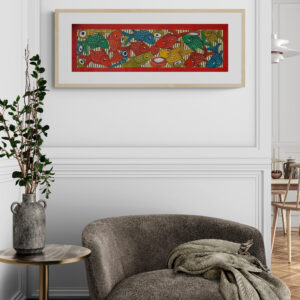
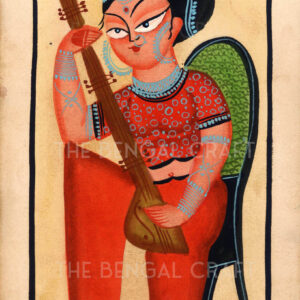
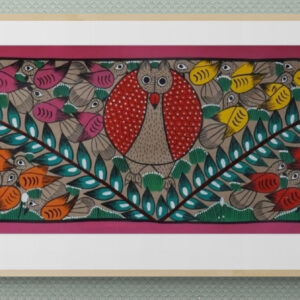
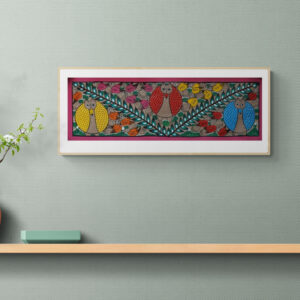
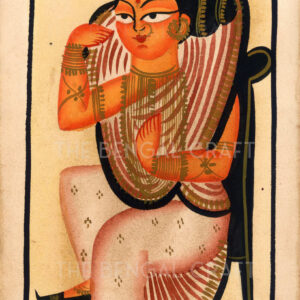
Reviews
There are no reviews yet.